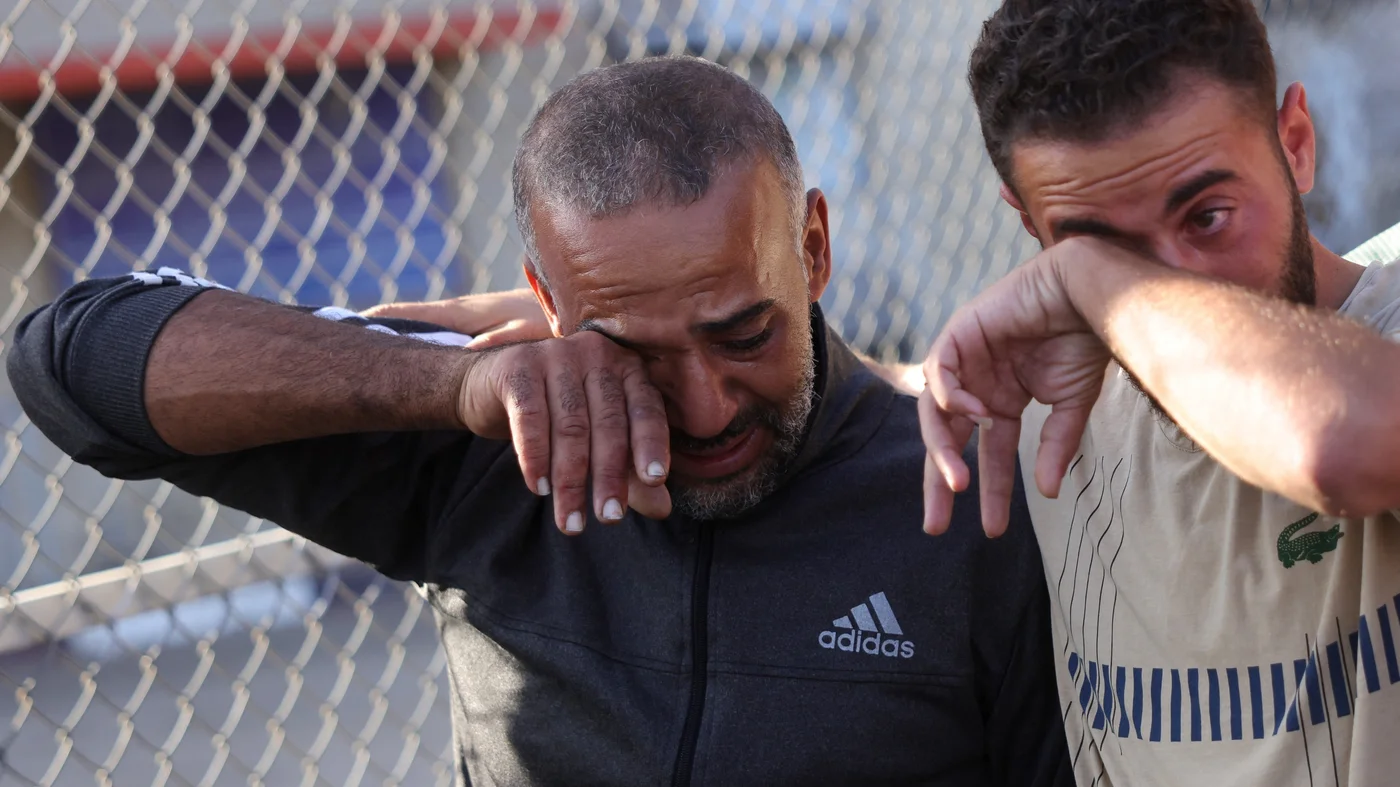Scores of Palestinians dead, regular arrests: Israel's ceasefire violations in Gaza so far

As Israeli continues its attacks on Palestinians in Gaza, the viability of the US-brokered ceasefire is coming into question.
On Sunday, Israel unleashed a deadly wave of bombings on targets in the besieged territory after it alleged that Hamas violated the terms of the truce deal.
The Israeli military said the attacks were in response to an alleged "attack" by Palestinians on its troops in southern Rafah, which involved rocket-propelled grenade and sniper fire.
However, the armed wing of Hamas, the Izz al-Din al-Qassam Brigades, denied any knowledge of the event, or connections to it, and affirmed it remains committed to the ceasefire.
Since the ceasefire agreement came into effect on 11 October, Israeli forces have committed over 80 violations of its terms.
Sign up to get the latest insights and analysis on Israel-Palestine, alongside Turkey Unpacked and other MEE newsletters
In the 11 days since the truce, local Palestinian media has reported Israeli artillery fire, air strikes and even the arrest and detainment of civilians.
Based on data collected by authorities in the besieged enclave, as well as local reports, Middle East Eye highlights some major Israeli breaches of the ceasefire agreement.
Shooting and shelling
According to the agreement signed by Israel and Hamas, “all military operations, including aerial and artillery bombardment and targeting operations will be suspended”.
Despite the agreement, the Government Media Office in Gaza reported that over 97 people have been killed by Israel as a result of the violations, with more than 230 others wounded.
The first of these violations started almost immediately after the truce came into effect.
At 10am local time on 11 October, shots were fired from Israeli vehicles stationed in Khan Younis, killing one Palestinian.
Several shots were reported later in the afternoon and evening of the same day, as the army fired from military vehicles and quadcopters.
The deadliest breaches of the truce occured on Sunday with more than 100 air strikes reported on Gaza.
Bombardments were in witnessed in Rafah and Khan Younis in the south, Jabalia in the north, and parts of central Gaza.
Among the sites hit were a cafe, a mobile phone charging station, a group of journalists and a house sheltering displaced people.
At least 24 Palestinians were killed in Israeli attacks on Sunday alone.
Overall, Israel's genocidal war on Gaza has killed more than 68,200 people, with over 80 percent of victims identified as civilians, according to leaked data collated by the Israeli military.
Arrests and detention
Besides killings, Israel has also violated other aspects of the truce agreement. Despite an ongoing prisoner exchange, Israel has arrested and even detained Palestinians in Rafah, as well as dozens in the occupied West Bank.
The Gaza media office noted that out of the 14 arrested in Gaza, five were released after being subjected to abuse by the Israelis.
Nine others were placed in handcuffs and kept captive by Israel.
Israeli authorities released nearly 2,000 living Palestinians and 150 remains, as part of its prisoner exchange deal.
At the same time, it has launched a campaign of arrests and detainment across the occupied West Bank and in Gaza’s south.
The Palestinian health ministry in Gaza noted that some of the bodies of Palestinians received from the Israelis showed signs of severe torture and abuse.
The remains of around 400 Palestinians are expected to be returned as part of the exchange.
Army incursions and aid restrictions
The media office recorded at least four instances of the Israeli army crossing over the agreed upon withdrawal lines in the agreement text.
It specified that the Israeli military “will not return to areas it has withdrawn from”. Instead, the army advanced into areas that it held no control over.
These areas include neighbourhoods in Khan Younis and Rafah, south of Gaza, as well as al-Sudaniya area, north Gaza, where Israeli tanks advanced towards Bianco Resort and targeted fishermen working within the permitted areas.
Israel has also placed restrictions on food aid, life-saving essentials and entry of building material into the devastated Palestinian territory in violation of ceasefire terms.
As part of the first phase of US President Donald Trump's 20-point ceasefire plan, Gaza's crossings were to be fully reopened on Monday to allow the entry of 400 aid trucks every day, with the number expected to rise to 600 in the following days.
A Guardian report on Friday said less than half of the agreed upon levels of aid were entering Gaza.
However, rights groups have noted that Israeli authorities continue to restrict and limit the amount of aid entering the strip.
Over the weekend, Israel halted aid deliveries into Gaza, in a major breach of the ceasefire agreement.
Israeli media said the decision followed a military recommendation to suspend aid deliveries into the Gaza Strip until further notice.
The Government Media Office in Gaza described the aid entering over the last week as a "drop in the ocean of needs", insufficient for over 2.4 million people, with the enclave requiring at least 600 trucks entering everday.